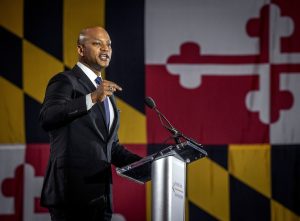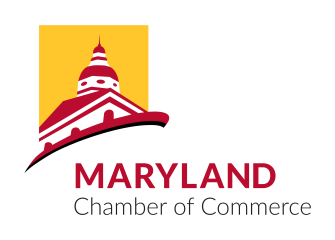
Maryland Gov. Wes Moore (D) escalated his call to rein in state spending this week, telling a convention of local government leaders the “hard truth” is the state has to pick some priorities at the expense of others.
In a speech laced with warnings, Moore told members of the Maryland Association of Counties that, “At a time when Marylanders are feeling squeezed and skeptical, we need to do more than tighten our belts. We must rethink how state government actually does business.” They responded with applause.
Thursday night’s speech represented the first-term governor’s latest public move taming the soaring expectations that accompanied him into office last year, when he sailed to victory on pledges to end childhood poverty, bridge the racial wealth gap and hasten the transition to 100 percent clean energy.
He continued to press a message he began to deliver in August: Maryland’s ambition will be constrained by its economic weaknesses and a sprawling budget that faces regular shortfalls because the state “spread ourselves too thin.”
The state faces an estimated $400 million budget hole next year that legislative analysts project will to balloon to about $1.8 billion annually in five years — driven by a long-standing mismatch between tax revenue and ambitious policy goals. Maryland’s revenue is expected to rise 3.3 percent annually while spending is set to grow by 5.1 percent, according to a June report by the Maryland Department of Legislative Services.
A similar dynamic has played out ahead of 17 of the past 20 budget cycles, Moore noted, with politicians pushing for policy wins passing legislation without putting money behind their plans.
As Moore put it Thursday, “We put everything inside of budgets without a plan on how to pay for it, and the budget gap is the result.” He added, “The hard thing means actually fixing a system that’s broken, so that we can lead and not simply sustain.”
He defended an early round of proposed and controversial spending cuts unveiled this week that would eliminate $3.3 billion of planned transportation projects over the next six years.
He did not identify other priorities he would eliminate.
“Papering over the problems — kicking the can down the road — simply asking people to pay more for things that they don’t feel are working that’s not hard,” Moore said.
In his speech, Moore asked the local officials for their “trust” in navigating the cuts ahead, saying “trust demands transparency and trust demands truth, even if it’s hard. This evening, I offer both — both to you and to the people of this state.”
“In this challenging time, we have a duty to act with discipline. Because discipline is what the people of this state deserve,” he said.
While saying directly “I don’t have all the answers right now, and I’m honest about that,” Moore also outlined some of the programs he planned to push during his second year.
He said he would unveil a package of housing bills next week, a handful of roughly a dozen he would push in the General Assembly session that begins in Maryland. He said he wanted to make Maryland the best place for businesses to invest in data centers and broadly to address the current workforce shortage in law enforcement. He said he would continue his campaign promise to address child poverty, promising an “all-out assault.” He said he would seek an “all-of-the-above” approach to public safety, which he broadly described to include reducing recidivism, support for law enforcement, enhanced coordination and statewide job training programs.
Moore said the pandemic era federal aid and roaring stock market swelled states’ balance sheets nationwide — and in Maryland produced record surpluses. But ultimately it amounted to a “mirage” that disguised Maryland’s systemic problems. The largest mismatch between the spending plans on the books and the money to pay for them comes from an education overhaul called the Blueprint for Maryland’s Future. It aims to boost achievement statewide, train students for careers outside of college and use the education system to alleviate some impacts of poverty, among other goals. It’s projected to cost $4 billion annually when fully implemented, which is several years away.
Moore’s Republican predecessor, Larry Hogan, also harped on that mismatch during his two terms, blaming Democratic state lawmakers for passing laws that called for unsustainable future spending but making year-by-year solutions.
Moore suggested he wanted a more wholesale overhaul, something he would need the Democratic supermajority in Annapolis to enact.
“We’re forced to reckon with structural challenges that have plagued our state for years,” he said. “This administration is going to refuse to ignore it, and we refuse to push policies that will only make it worse, and something worse off to our successors.”


